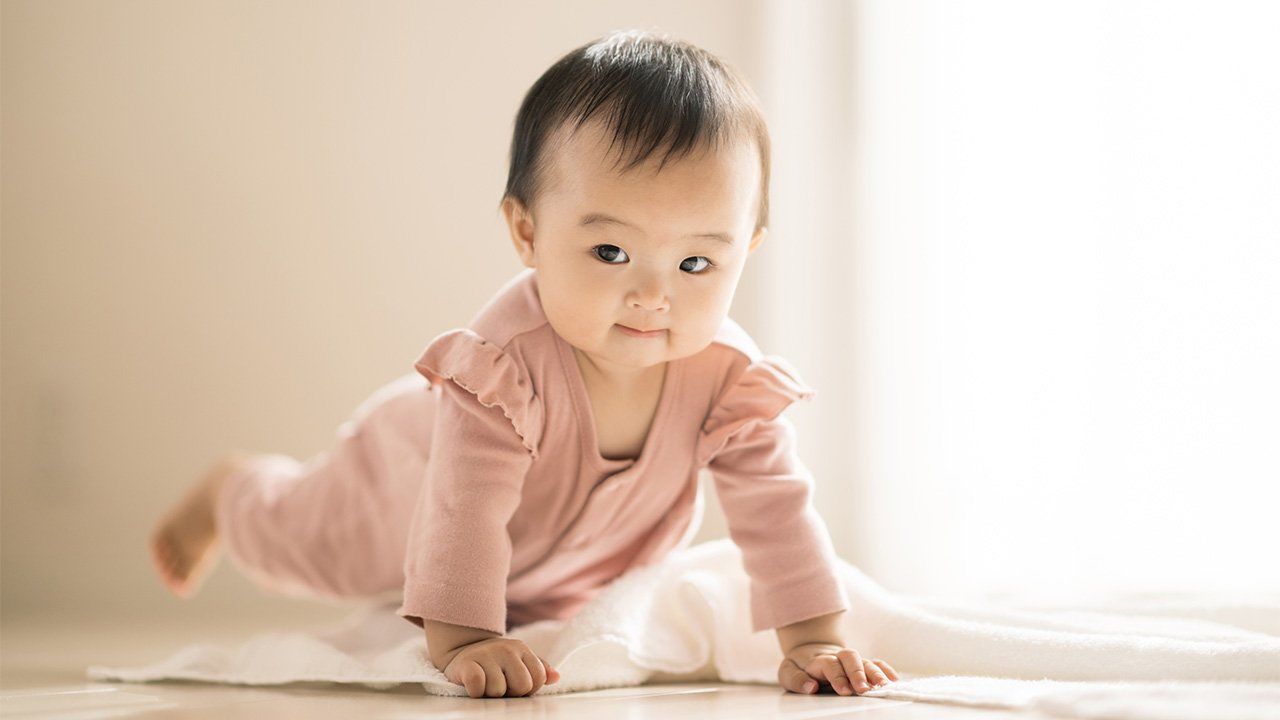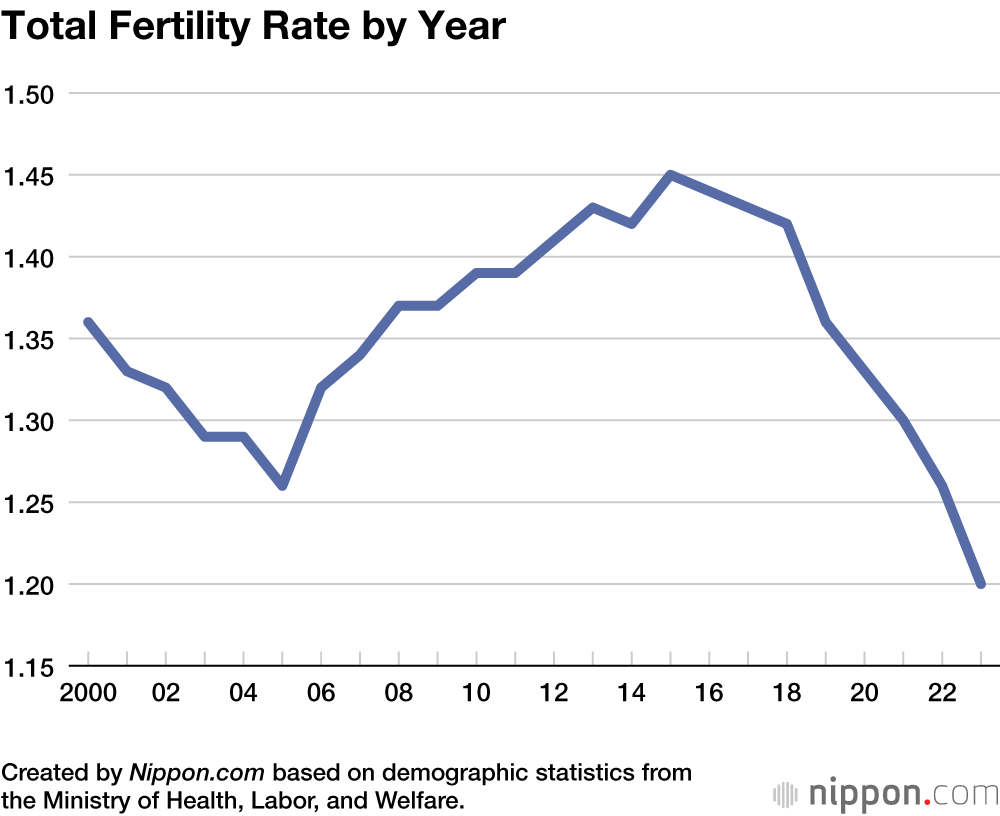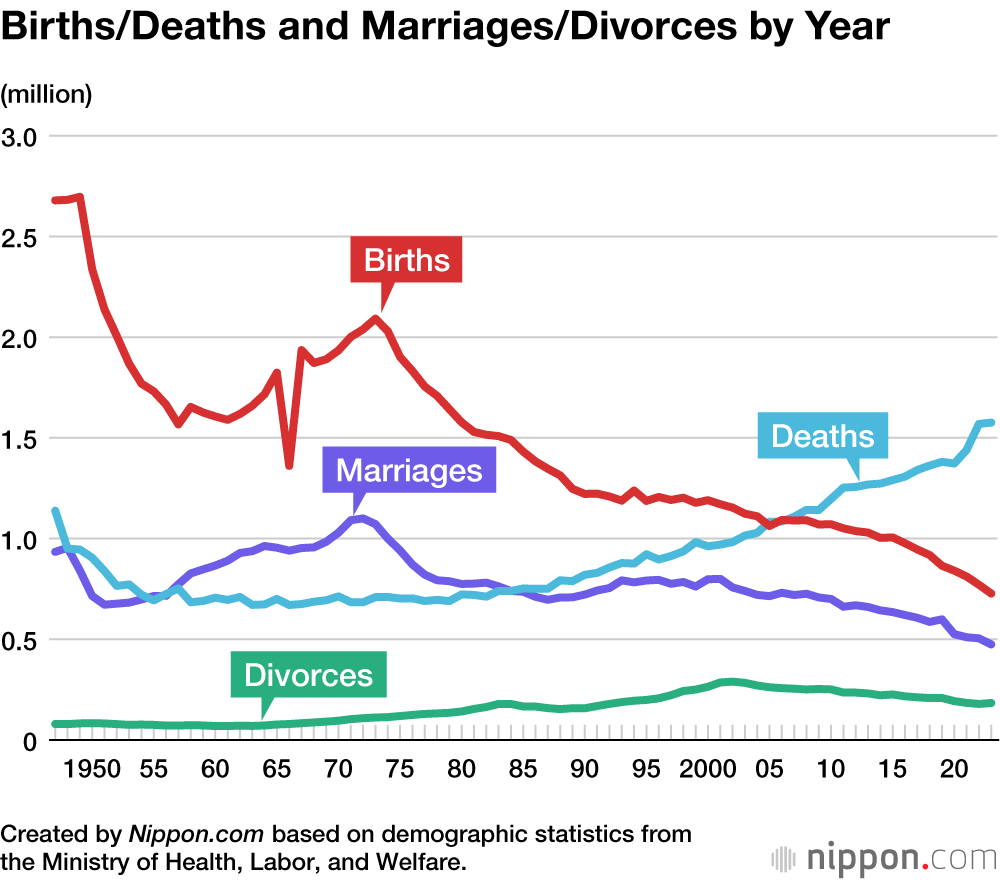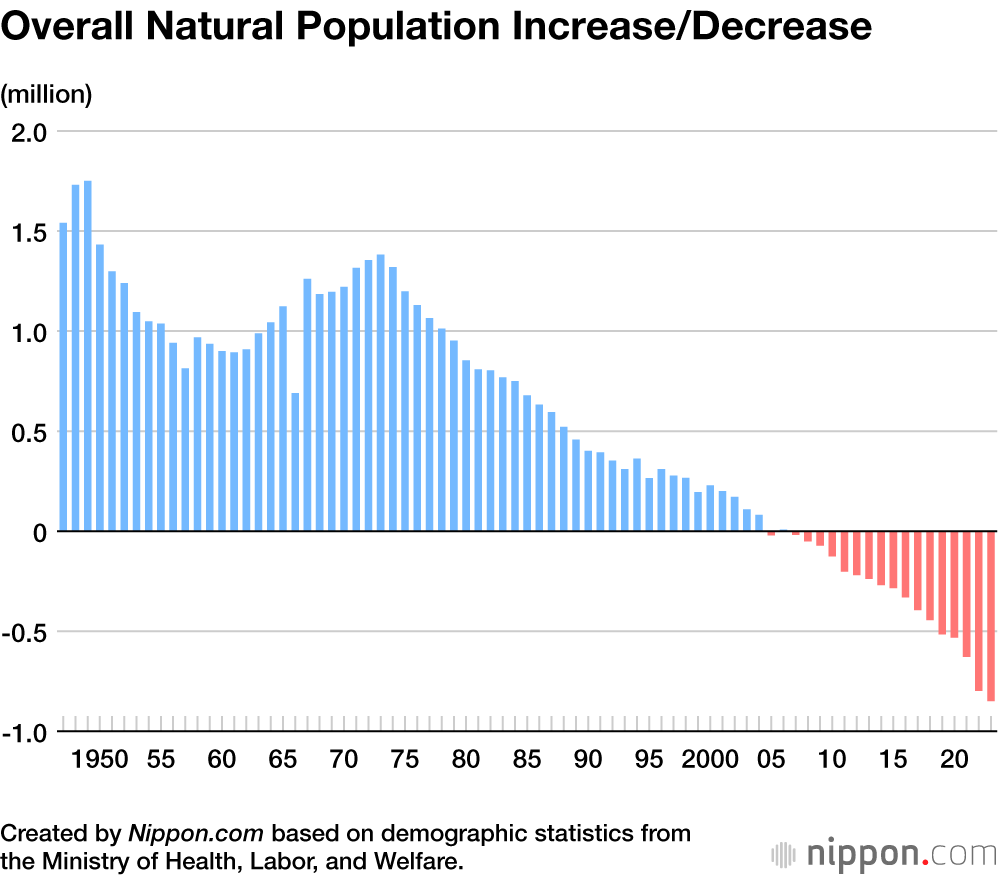
Japan’s Fertility Rate Drops to New Record Low
Society Family- English
- 日本語
- 简体字
- 繁體字
- Français
- Español
- العربية
- Русский
Demographic statistics released by the Ministry of Health, Labor, and Welfare show that in 2023 the total fertility rate, indicating the number of children a woman has in her lifetime, fell for the eighth consecutive year in Japan to a record low of 1.20, a year-on-year decrease of 0.06 points. The fertility rate dropped in all 47 prefectures, with Tokyo dipping below 1.0 for the first time to 0.99. Neighboring Saitama, Chiba, and Kanagawa Prefectures were all at less than 1.2.
Japan logged 727,277 births, down 43,482 compared to the previous year and marking a record low for the eighth consecutive year.
There were 474,717 marriages, a decrease of 30,213 or 6.0%, making it the first time in the postwar era the figure has fallen below 500,000. Cultural factors including the general aversion to having children outside of marriage in Japan and trends toward marrying late or not at all present major challenges to efforts to lift the number of births.
Japan’s Demographics
| 2023 estimate | 2022 | |
|---|---|---|
| Births | 727,277 | 770,759 |
| Total fertility rate | 1.20 | 1.26 |
| Deaths | 1,575,936 | 1,569,050 |
| Natural population change | -848,659 | -798,291 |
| Marriages | 474,717 | 504,930 |
| Divorces | 183,808 | 179,099 |
Created by Nippon.com based on demographic statistics from the Ministry of Health, Labor, and Welfare.
The number of deaths in 2023 increased year-on-year by 6,886, reaching 1,575,936, the most in the postwar period. After the natural decrease in population, which is the difference between the number of births and deaths, surpassed 600,000 for the first time in 2021, it has risen sharply to a record high 848,659 in 2023.
During the first baby boom (1947–49) immediately after the end of World War II, the number of annual births in Japan reached 2.5 million, and births per year exceeded 2 million during the second baby boom (1971–74). Since then, the number has consistently declined, without a spike in births when the second baby-boom generation reached the age to have their own children. The number of births dropped below the number of deaths for the first time in 2007.
(Translated from Japanese. Banner photo © Pixta.)



